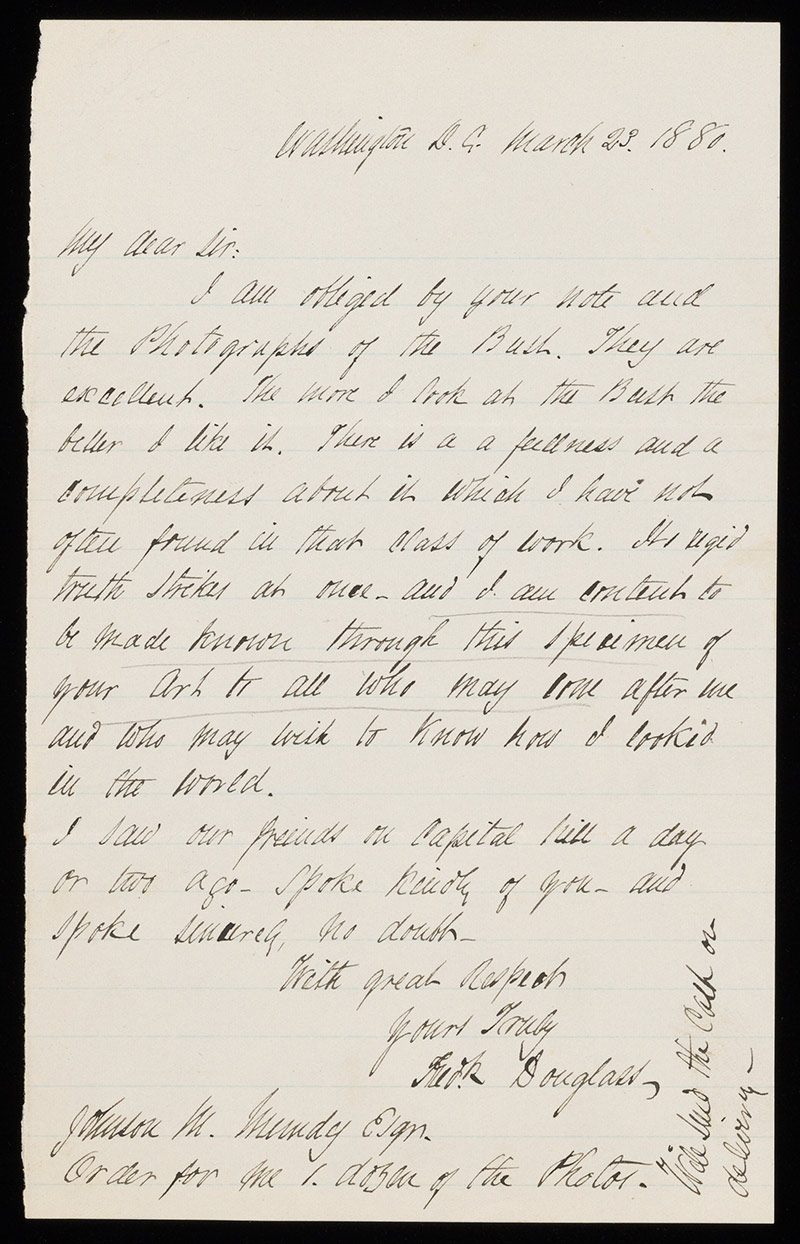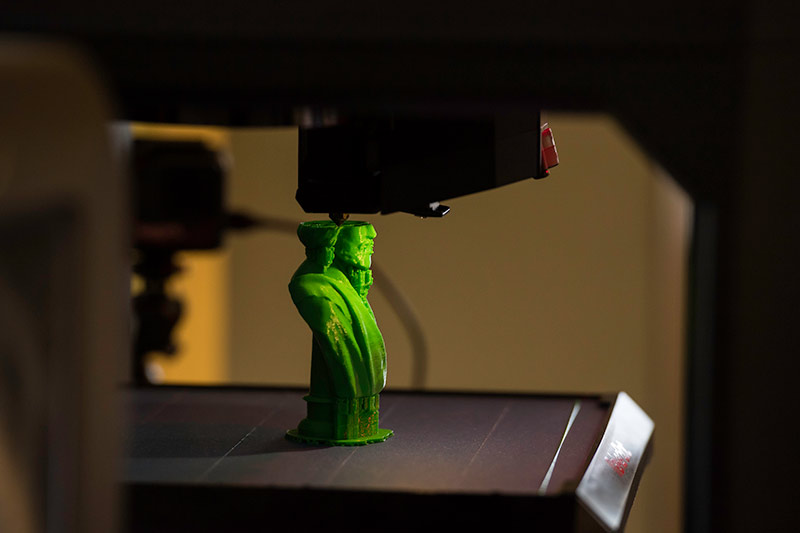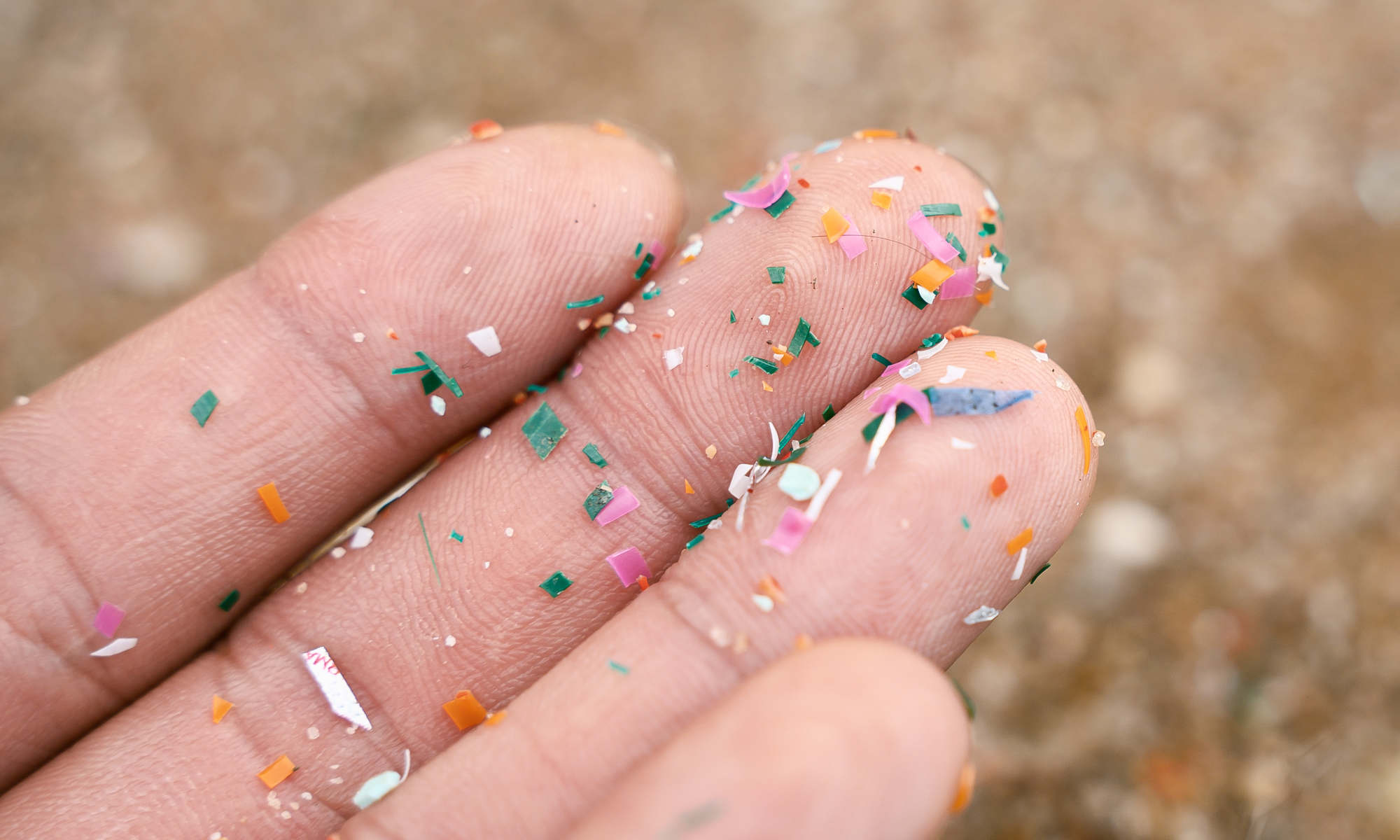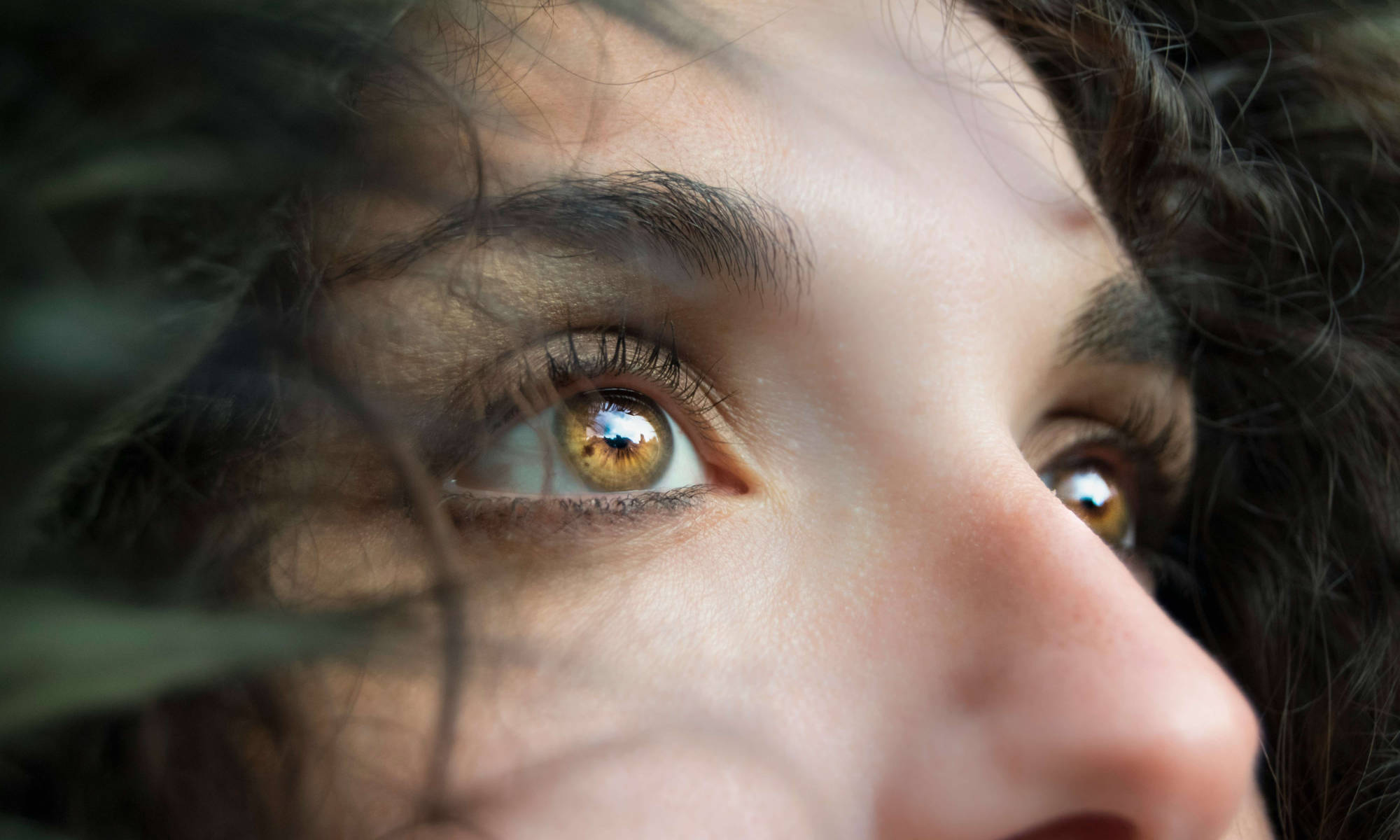Frederick Douglass–abolitionist, orator, author, and publisher–is one of the most recognized figures in American history. He is widely thought to be the most photographed person of the 19th century, sitting for at least 160 surviving portraits.
Douglass’s awareness and cultivation of his own public image is in evidence in a letter he wrote to the sculptor Johnson Mundy, dated March 23, 1880. Mundy created a bust of Douglass, commissioned by members of the Rochester community, that was unveiled at the University of Rochester in 1879, and that remains on display today in Frederick Douglass Commons.
In the letter to Mundy, recently acquired by River Campus Libraries’ Department of Rare Books, Special Collections, and Preservation, Douglass writes, “The more I look at the bust, the better I like it. There is a fullness and a completeness about it which I have not often found in that class of work.” Douglass goes on to express his future hopes for the bust, adding, “I am content to be made known through this specimen of your art to all who may come after me, and who may wish to know how I looked in the world.”

Jessica Lacher-Feldman, assistant dean and Joseph N. Lambert and Harold B. Schleifer Director of Rare Books, Special Collections, and Preservation, says the letter complements the University’s already rich collection of Douglass holdings. “Having the actual bust, and now the letter, is just one more way to better understand Douglass’s legacy and connection with the University and with the city,” she says. The letter was purchased with the support of the Friends of the University of Rochester Libraries, and is part of a special exhibition marking the 200th anniversary of Douglass’s birth.
Mundy’s 1879 bust of Douglass is now available in forms that would have been unimaginable to both artist and subject. Using 3D scanning technology, associate professor of English Gregory Heyworth and the River Campus Libraries’ Digital Scholarship Lab have created a digital rendering of the bust. The resulting file, now available freely online, allows anybody with access to a 3D printer to reproduce their own copy of the bust.

“Using 21st-century technology for historical preservation and access is critical when trying to build a greater understanding and appreciation for the past as we move towards the future,” says Lacher-Feldman.
Rare Books, Special Collections, and Preservation is home to one of the largest collections of record for Frederick Douglass materials. The foundation of the University’s Douglass materials comes from the papers of Isaac and Amy Post , 19th-century radical activists and close friends of Frederick Douglass. The libraries continue to build on their Douglass holdings, and the Frederick Douglass Project continues its work to digitize and make freely accessible all the letters, photographs, newspapers, and other materials held in the library.



